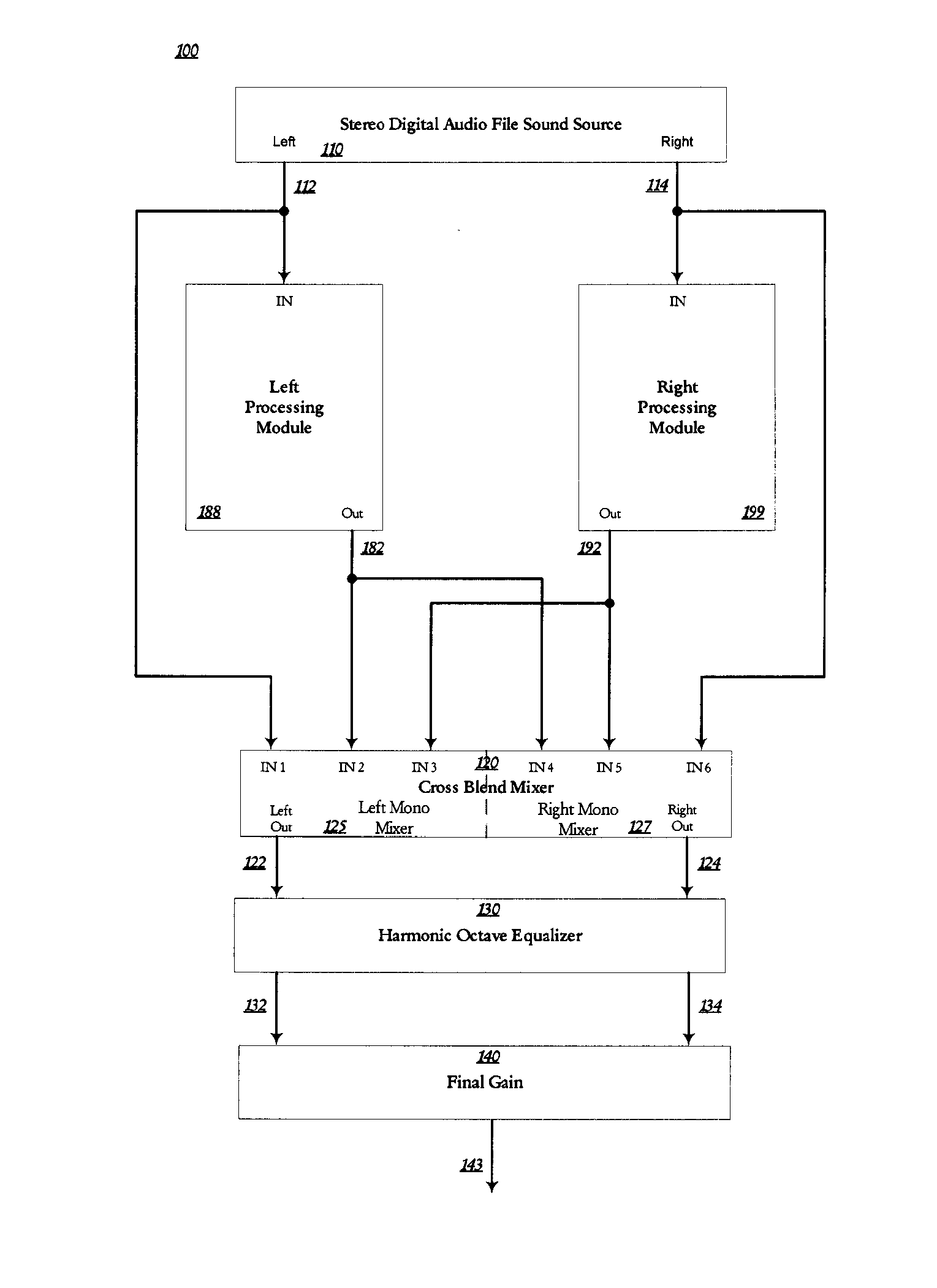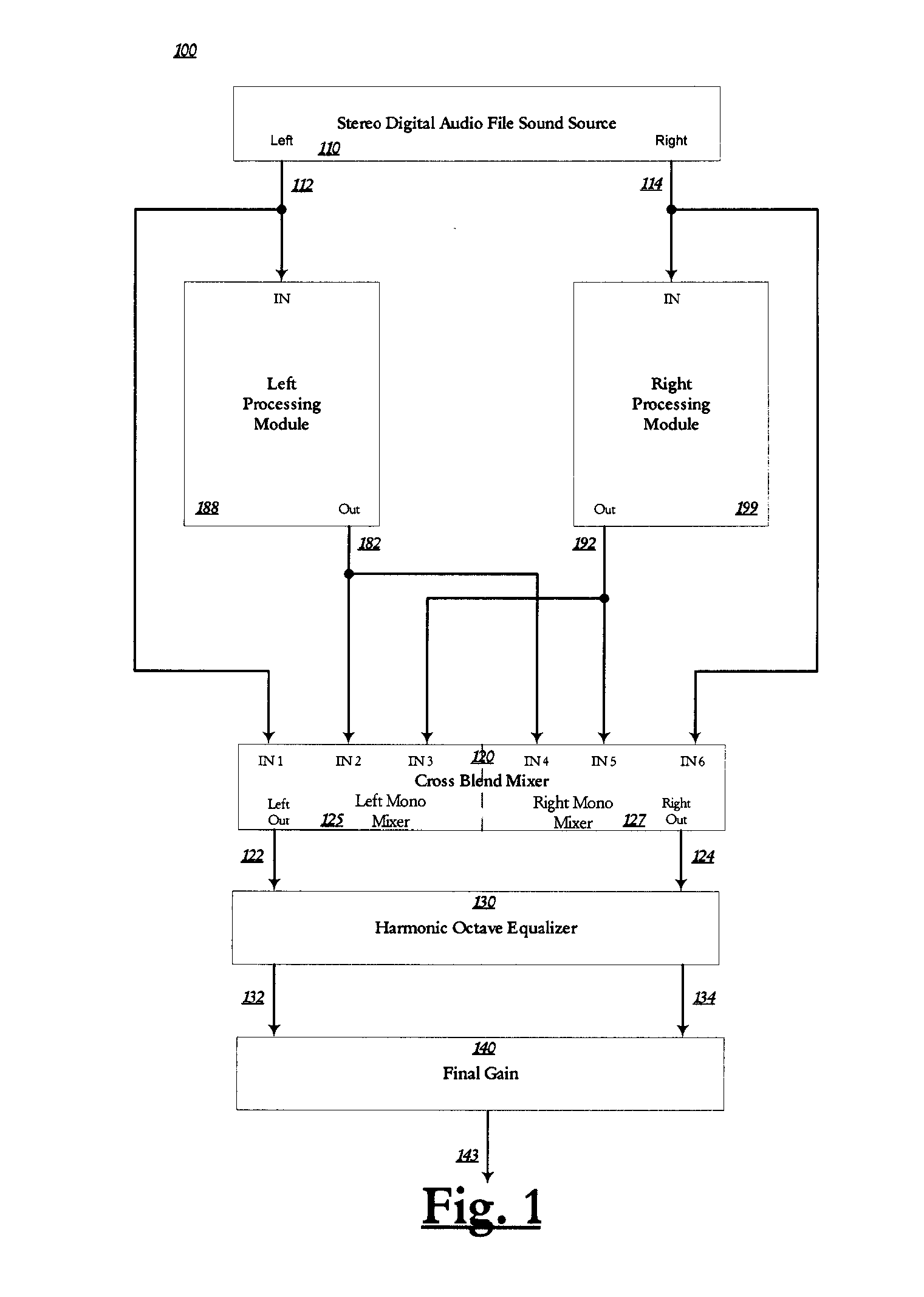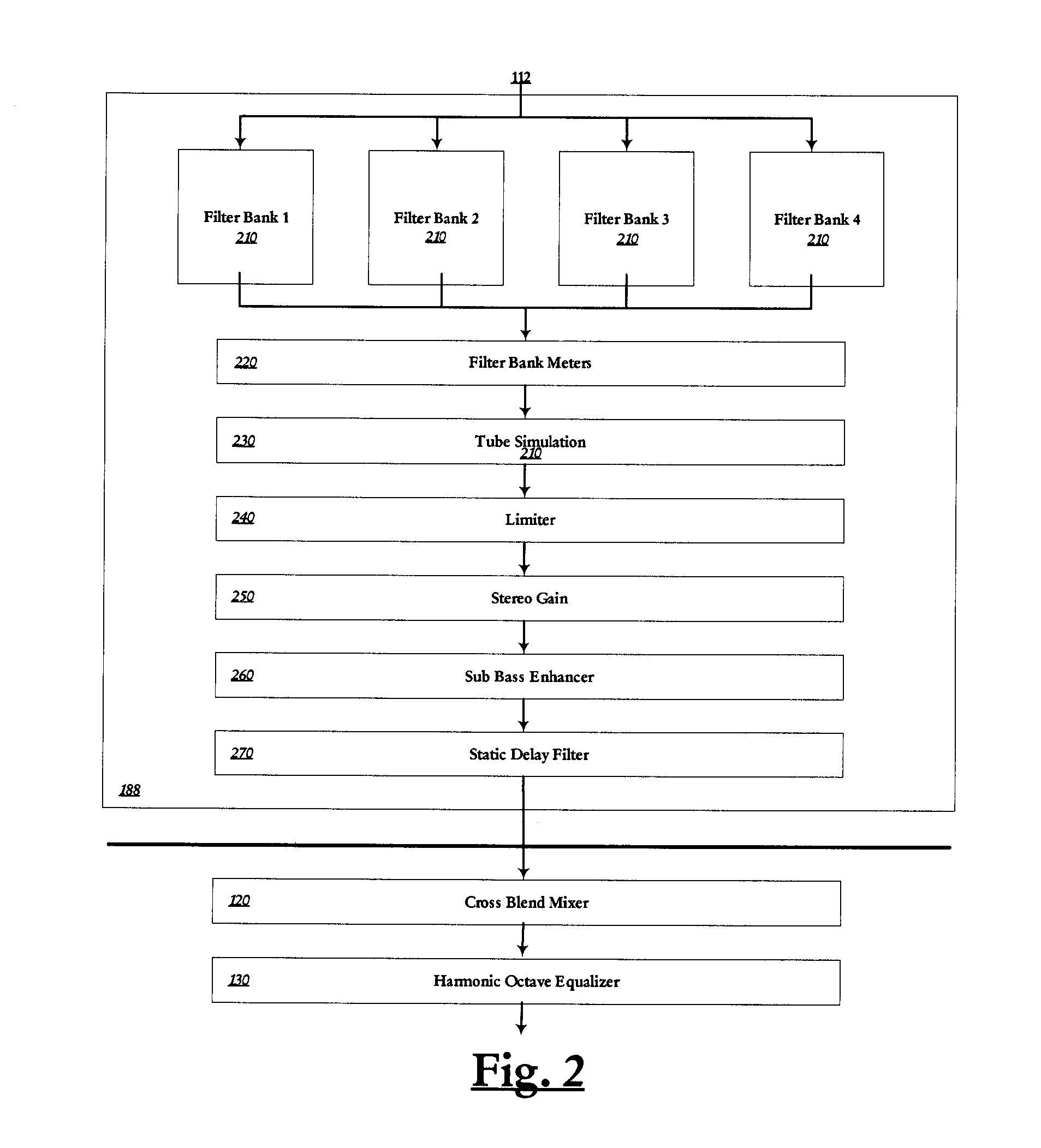Method and device for optimizing audio quality
a technology of audio quality and optimization method, applied in the direction of electrical transducers, stereophonic arrangments, gain control, etc., can solve the problems of affecting the consistency of sound quality, increasing the complexity and burden of original recordings, and failing to provide listeners with a realism experience, so as to optimize the output quality of audio sources, enhance the quality of audio output, and minimize disharmony and distortion noise
- Summary
- Abstract
- Description
- Claims
- Application Information
AI Technical Summary
Benefits of technology
Problems solved by technology
Method used
Image
Examples
Embodiment Construction
)
[0028]FIG. 1 illustrates an exemplary embodiment of the Audio-Enhancing Module 100 according to the present invention. The Audio-Enhancing Module 100 is advantageously implemented in a software process that runs on an information processing system such as a computer (such as desktop or laptop), pocket PC, personal digital assistants (PDA), mobile devices, and the like. The Audio Source 110 of the Audio-Enhancing Module 100 can be either analog or digital signal.
[0029]In some implementations, the Audio Source 110 is saved in the hard drive or memory of the computer or similar devices to be accessed and processed by the Audio-Enhancing Module 100. In other implementations, the Audio Source 110 is directly sent to the Audio-Enhancing Module 100 for processing.
[0030]If the Audio Source 110 is not already in the form of stereo, it is advantageously converted into two Stereo Signals 112, 114 upon entering the Audio-Enhancing Module 100, which subsequently sends the two Stereo Signals 112...
PUM
 Login to View More
Login to View More Abstract
Description
Claims
Application Information
 Login to View More
Login to View More - R&D
- Intellectual Property
- Life Sciences
- Materials
- Tech Scout
- Unparalleled Data Quality
- Higher Quality Content
- 60% Fewer Hallucinations
Browse by: Latest US Patents, China's latest patents, Technical Efficacy Thesaurus, Application Domain, Technology Topic, Popular Technical Reports.
© 2025 PatSnap. All rights reserved.Legal|Privacy policy|Modern Slavery Act Transparency Statement|Sitemap|About US| Contact US: help@patsnap.com



